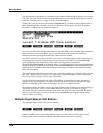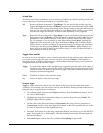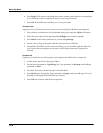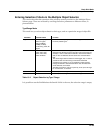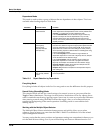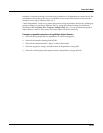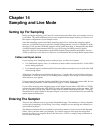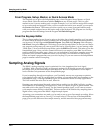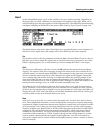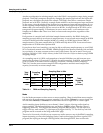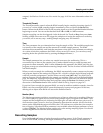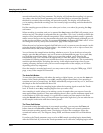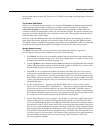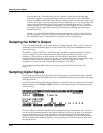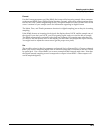
14-2
Sampling and Live Mode
Sampling Analog Signals
From Program, Setup, Master, or Quick Access Mode
The simplest way to get to the SampleMode page is from Program, Setup, Master, or Quick
Access Mode. Press the soft button labelled Sample on any of these pages. This is a good
method to use if you are making only a couple of samples, or if you want to assign each sample
to its own keymap and program. Once you have created and saved your sample, you can press
the Preview soft button. This button provides a quick way to create a program and keymap,
with your sample assigned across the entire range of the keyboard. The program is a one-layer
program that uses the settings from the Program 199 Default Program.
From the Keymap Editor
This is a better method to use if you’re going to be doing lots of multi-sampling, or if you need
to create custom keymaps in which you have your new samples assigned across the keyboard in
one keymap. Call up Program 199 Default Program. Press Edit, then Keymap. Select Keymap
168 Silence, then press Edit again. This brings you to the Keymap Editor. (In fact you can choose
any program and keymap you want to start with, but by choosing these, you are starting with a
“blank slate.”) Now from the Keymap Editor, press the MIDI mode button. This takes you to the
SampleMode page. Once you have created and saved your samples, press Exit. You will now
return to the Keymap-editor page, where you can immediately assign those samples across the
keyboard. Once you have created and saved your keymap, you can either exit the Keymap
Editor and create a program that uses your new keymap, or you can return to the SampleMode
page for another round of sampling.
Sampling Analog Signals
The K2661’s analog sampling input is optimized for a low-impedance line level signal
(-10 dBm). With a line-level signal, an input gain setting of 0 dB should prevent any clipping of
the sample even at maximum output from the source. You can compensate for lower input
levels with the Gain parameter on the SampleMode page.
If you’re sampling through a microphone, you’ll probably want to use a preamp to optimize
your signal-to-noise ratio. If you don’t have a preamp, you can adjust the Gain parameter on the
SampleMode page. A setting of 21 dB will give you reasonable results for many applications.
This will increase the noise level as well, however.
Running your sample signal through a mixer before sending it to the K2661 will give you the
most flexibility in controlling your signal level, since you can use its gain or pad if needed. This
may add noise to the signal, however. For the cleanest possible signal, you’ll want to connect
your sample source directly to the K2661. The best results will be achieved by sampling from a
digital source, using one of the K2661’s digital sample inputs.
Assuming your connections are made, you’re ready to set up your first sample recording. Select
the SampleMode page (refer to Entering The Sampler above). The top line of the SampleMode
page gives you the amount of free sample memory, and the amount of free program memory.



